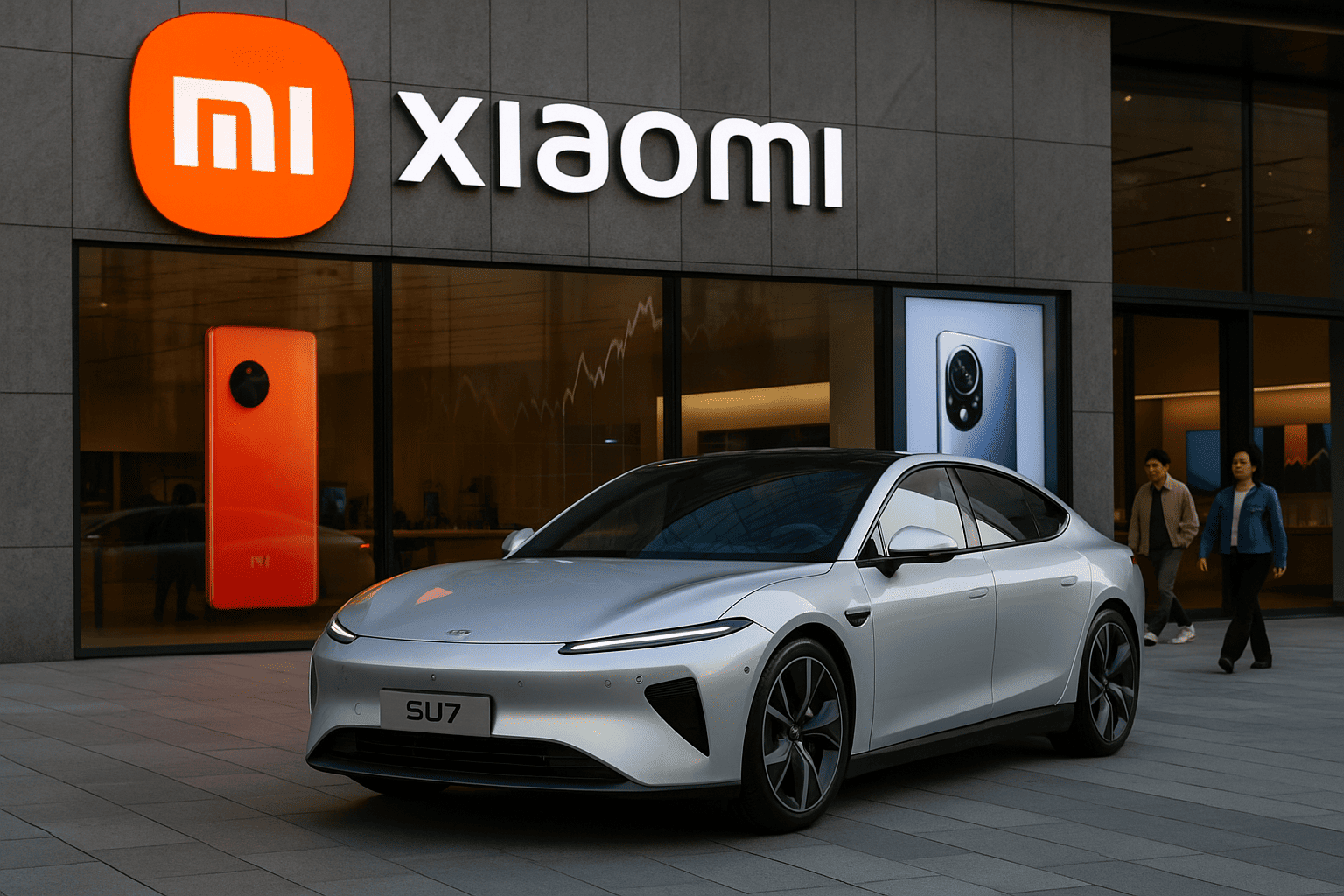Xiaomi Q3 Revenue Jumps 22% as EV Push Powers Profit
By Tredu.com • 11/18/2025
Tredu

Headline numbers and what moved them
Xiaomi reported third-quarter revenue of RMB113.1 billion, up 22.3% year on year, and adjusted net profit up 80.9% to RMB11.3 billion. The top line landed a touch below analyst expectations, yet profitability surprised to the upside as the company’s electric-vehicle and AI-adjacent initiatives scaled. Hong Kong-listed shares closed 2.81% lower on the day, though they remain up roughly 18% year to date.
EV momentum, now a material revenue engine
Management’s multi-segment model is increasingly shaped by autos. Xiaomi’s EV business generated RMB28.3 billion in Q3 revenue, an acceleration from RMB20.6 billion in Q2 and RMB18.1 billion in Q1, underscoring rising output and improving delivery cadence. That contribution helped offset softness in parts of the smartphone portfolio and lifted operating leverage across the group.
Profit beats, revenue just shy of the mark
The quarter paired a strong profit print with a slight revenue miss versus LSEG-compiled estimates. Analysts had penciled in about RMB116.5 billion for Q3 revenue; Xiaomi came in a few billion yuan lighter. The upside in adjusted net profit, however, exceeded a RMB10.3 billion consensus, helped by mix, scale benefits in newer lines, and cost discipline.
How the core businesses lined up
Smartphones remain a large base that funds expansion. Unit pricing and regional mix continue to matter, particularly as higher-end Android rivals refresh flagships. Internet services and IoT devices added breadth, but the standout incremental driver was autos. The company also cited AI and other new initiatives as profit contributors, aided by tighter expense controls and early operating efficiency from scaled programs.
Cash signals and operating posture
With EV revenue rising quarter-over-quarter and adjusted profit ahead of expectations, Xiaomi entered the fourth quarter with better visibility on operating cash generation. The focus now shifts to capital allocation between automotive capex, AI compute commitments, and the smartphone roadmap. Investors will watch whether unit economics in autos improve with supplier discounts and whether software features can lift recurring revenue per vehicle.
Market reaction, explained
Why did the stock slip on a headline beat in profit? Three factors likely weighed. First, the slight revenue shortfall versus consensus. Second, questions about the durability of smartphone momentum into year-end promotions. Third, the natural digestion after a strong year-to-date run in the shares. Price action fits a familiar pattern, relief on margins tempered by caution on the top-line trajectory.
EV scale and the competitive lane ahead
Rising EV revenue underscores progress, but competition is dense. Domestic peers are iterating quickly on performance and price, and global markets involve homologation, distribution, and brand-building costs. Still, the rising quarterly cadence in EV sales shows that Xiaomi’s vertically integrated approach can scale inside China; the next test is translating that performance into sustainable margins and, eventually, export plans. Prior disclosures and reporting point to an ambition to expand volumes through 2025 as supply chains mature.
Costs, mix, and the path to steadier margins
Automotive gross margins typically lag consumer electronics until plants reach higher utilization and supplier terms reset. Xiaomi’s route to steadier group margins involves: higher attach of software and services to vehicles; continued mix shift toward premium handsets where the company has room to lift average selling prices; and efficiency across logistics for IoT. The combination can preserve profit growth even if headline revenue oscillates with handset cycles.
Risk ledger investors are tracking
Key watchpoints include smartphone demand elasticity if discounts thin, input-cost volatility in batteries and optics, and regulatory complexity for any overseas auto rollout. On capital intensity, investors will parse disclosures on EV capex and AI infrastructure. A heavier spend profile is manageable if cash conversion in core businesses remains firm and if software and services increase as a share of group revenue.
Where the story goes next
Into Q4 and 2026 planning, the company’s priorities are straightforward: keep smartphone share stable in core regions; increase EV output while lifting unit economics; and deepen service revenue across devices and vehicles. If EV revenue continues its quarter-over-quarter climb and smartphone mix improves, Xiaomi can defend margin gains even against a noisier macro backdrop.
Bottom line
Xiaomi combined faster EV scale with disciplined execution to post 22% revenue growth and an 80.9% jump in adjusted net profit. The slight revenue miss trimmed the share reaction, yet the operating story strengthened. Sustained EV momentum, steadier smartphone mix, and expanding services are the levers that can turn a good quarter into a durable trend.

How to Trade Like a Pro
Unlock the secrets of professional trading with our comprehensive guide. Discover proven strategies, risk management techniques, and market insights that will help you navigate the financial markets confidently and successfully.


